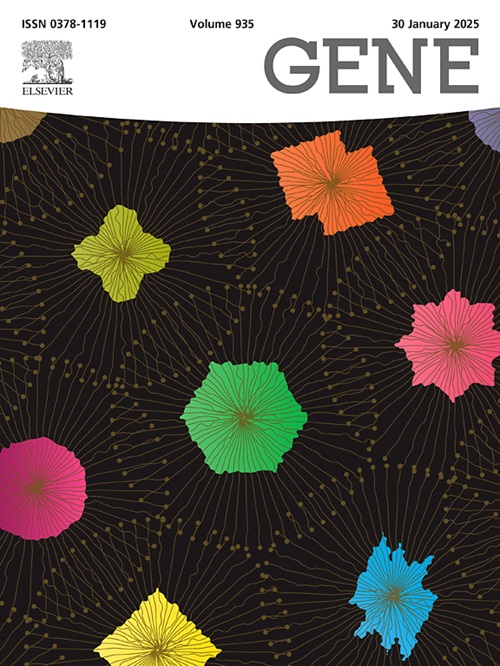Mitogenome diversity and evolution of Bos indicus cattle in India
IF 2.6
3区 生物学
Q2 GENETICS & HEREDITY
引用次数: 0
Abstract
Mitochondrial DNA has been widely utilized as a valuable tool for studying the evolutionary and demographic history both within and between different livestock speciesover the past three decades. Evaluation of the evolutionary history, population structure and genetic diversity is imperative for their productivity, ecosystem services, and breeding and conservation strategies for effective management. The present study included complete mitogenome of 78 cattle, out of which 33 samples belonged to 6 Bos indicus breeds of India. Mitogenome diversity of zebu cattle within population (π- nucleotide, haplotype diversity) was estimated using DnaSP v6 software and between populations (FST ratio, AMOVA analysis) was estimated using Arlequin 3.5.2.2. Ladakhi breed showed maximum (π = 0.00645) while Gir (π = 0.00042) and Tharparkar (π = 0.00053) showed minimum diversity. The diversity between the breeds of Indian cattle was 16.34 %. There were 13 and 14 haplotypes in each of I1 and I2 halogroups respectively suggesting that the divergence of Bos indicus haplotypes likely occurred within the Indian subcontinent. The Bos indicus and Bos taurus cattle lineages separated approximately 0.75 million years ago. The divergence pattern observed in zebu cattle highlighted the probability of a distinct ancestor and supported notion of independent divergence of Bos indicus.
印度 Bos indicus 牛的微基因组多样性和进化。
过去三十年来,线粒体 DNA 已被广泛用作研究不同家畜物种内部和之间进化和人口历史的宝贵工具。评估牲畜的进化史、种群结构和遗传多样性对于提高牲畜的生产力、生态系统服务以及有效管理的育种和保护策略至关重要。本研究包括 78 头牛的完整有丝分裂基因组,其中 33 个样本属于印度的 6 个品种。使用 DnaSP v6 软件估算了种群内斑马牛的有丝分裂基因组多样性(π-核苷酸、单体型多样性),使用 Arlequin 3.5.2.2 软件估算了种群间的有丝分裂基因组多样性(FST 比值、AMOVA 分析)。拉达克牛的单倍型多样性最高(π = 0.00645),而吉尔牛(π = 0.00042)和塔帕卡尔牛(π = 0.00053)的单倍型多样性最低。印度牛品种间的多样性为 16.34%。I1 和 I2 组中分别有 13 和 14 个单倍型,这表明印度牛单倍型的分化很可能发生在印度次大陆。大约 75 万年前,Bos indicus 和 Bos taurus 牛系分离。在犎牛中观察到的分化模式突显了不同祖先的可能性,并支持犎牛独立分化的观点。
本文章由计算机程序翻译,如有差异,请以英文原文为准。
求助全文
约1分钟内获得全文
求助全文
来源期刊

Gene
生物-遗传学
CiteScore
6.10
自引率
2.90%
发文量
718
审稿时长
42 days
期刊介绍:
Gene publishes papers that focus on the regulation, expression, function and evolution of genes in all biological contexts, including all prokaryotic and eukaryotic organisms, as well as viruses.
 求助内容:
求助内容: 应助结果提醒方式:
应助结果提醒方式:


